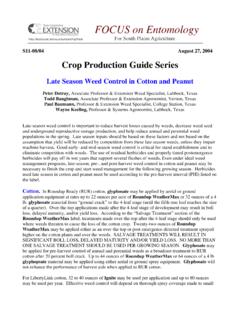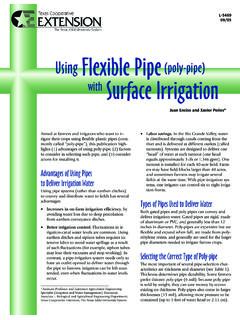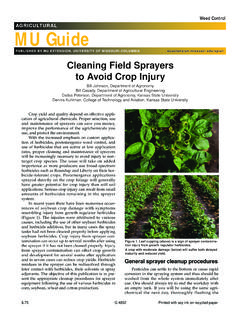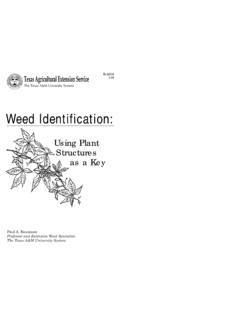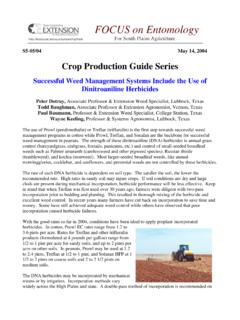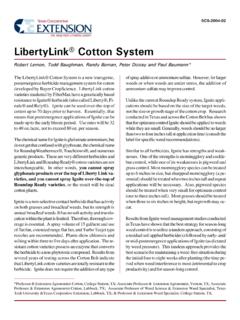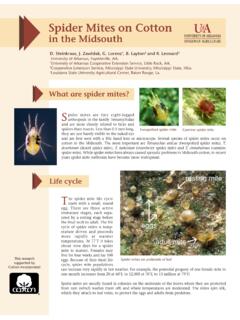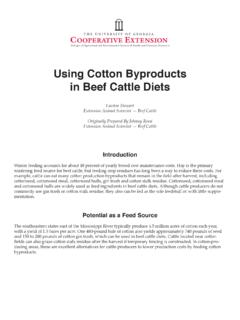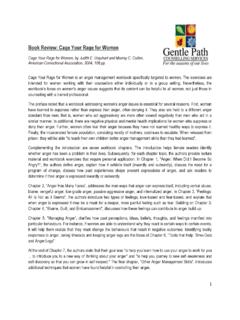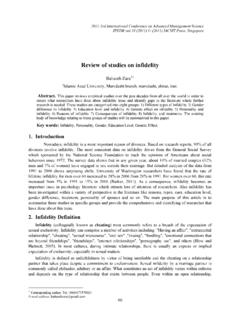Transcription of Overview of USDA HVI Cotton Classification Standards and ...
1 Overview of usda HVI Cotton Classification Standards and Qualification Materials usda HVI Cotton Classification Standards and Materials for Calibration Universal HVI Cotton Calibration Standards For Strength, Length & Uniformity Index 2 categories: Long/Strong & Short/Weak Used for HVI calibration of Length, Strength, Uniformity Index measurements only usda HVI Cotton Classification Standards and Materials for Calibration usda Pima HVI Calibration Cotton Standards - For Strength, Length & Uniformity Index - 2 Categories: Long/Strong & Short/Weak - Used for HVI calibration of Length, Strength, Uniformity Index measurements only usda HVI Cotton Classification Standards and Materials for Calibration Universal HVI Micronaire Cotton Calibration Standards 2 categories: High (Au) & Low (Gu).
2 Used for HVI calibration for Micronaire measurement only usda HVI Cotton Classification Standards and Materials for Calibration HVI Color Calibration Tiles Instrument specific calibration tool, not a standard Set of five tiles Used for HVI calibration of color Rd and +b usda HVI Cotton Classification Standards and Materials for Calibration Trash Calibration Tile Full patterned tile Instrument specific calibration tool, not a standard Used for HVI calibration of trash percent area and trash particle count usda HVI Cotton Classification Standards and Materials for Annual Qualification 8x8 Evaluation Cottons For Strength, Length & Uniformity Index 8 categories covering Upland Length/Strength range - Categories: 8x8 31 8x8 35.
3 8x8 32 8x8 36. 8x8 33 8x8 37. 8x8 34 8x8 38. Used for qualification of HVI testing level for Length, Strength, Uniformity Index on each HVI instrument usda HVI Cotton Classification Standards and Materials for Annual Qualification International Calibration Cotton Standards - For Micronaire only (6 types covering range). - Types: Am, Gm, Cm, Im, Dm, Bm - Used for qualification of HVI testing level for micronaire on each HVI instrument usda HVI Cotton Classification Standards and Materials for Annual Qualification Universal HVI Cotton Color Standards For Rd/+b Color 12 Cotton samples representing broad color range with standard reference values for Rd/+b Used for qualification of HVI testing level for Rd and +b on each HVI instrument usda HVI Cotton Classification Standards and Materials for Annual Qualification usda HVI Trash Standards For trash percent area and trash particle
4 Count 12 images of Cotton samples under glass representing broad trash range with standard reference values percent area and particle count Used for qualification of testing level for percent area and particle count on each HVI instrument Production of HVI Classification Standards and Qualification Materials Production of Standards Prepared Annually: 200+ Sets of Color Tiles 200+ Trash Tiles 100+ Color Check Boxes 50+ HVI Trash Standards 20,000+ kg of Cotton for Calibrating HVI Length, Strength, Uniformity and Micronaire Prepared Annually Production of HVI Cotton Standards All usda HVI Cotton calibration Standards traceable to usda master reference cottons Bales selected based upon usda Classification data for potential calibration standard Values established through intense testing processes Production of HVI Cotton Standards Value Establishment Process Selected bales tested by minimum of 6 HVI.
5 Instruments in multiple labs Minimum of 120 test repetitions for each bale to establish values Bale results must meet strict level and variability guidelines to be approved as a standard Production of HVI Color/Trash Materials usda HVI color and trash Standards traceable to usda master reference cottons. usda color and trash calibration materials traceable to usda master reference cottons. Values established using master colorimeter/ master trashmeter Production of HVI Color/Trash Materials Value Establishment Process Each tile/ Cotton tested for 4.
6 Repetitions at 4 orientations Measurements for each tile/ Cotton must meet allowable variability tolerances Values established based on the average of the 4 measurements Established values are verified Utilization of Testing Tolerances Understanding the Nature of HVI Data Important Points: - HVI data is statistical in nature - Even the best HVI data has an accepted level of variability (error). - Statistical tolerances are required in all areas of HVI data handling and use - Examples where tolerances are used on HVI data: - Calibration, Qualification, QA, Round Testing, Marketing, Mill laydowns, etc.
7 Utilization of Testing Tolerances What is a testing tolerance? Range of acceptable error Why are tolerances needed? Inherent variability of Cotton Inherent variability of instrument Tolerances vary for testing functions based on the number of test repetitions Utilization of Testing Tolerances usda maintains multiple levels of testing tolerances. Calibration Annual Qualification Retests Utilization of Testing Tolerances Calibration Tolerances Purpose: Establish accurate instrument testing level Most restrictive testing tolerance Calibration verification based on 12 comb repetitions for length, strength, uniformity index usda Testing Tolerances Calibration Micronaire Strength Length Uniformity Color Rd Color +b Trash Area Trash Particle Count Utilization of Testing Tolerances Annual Qualification Tolerances Purpose.
8 Evaluates precision and accuracy based on multiple reference cottons with established values and low standard deviations Based on 8 repetitions per standard Cotton /. qualification material usda Testing Tolerances Annual Qualification Mean Standard Deviation Micronaire Strength Length Uniformity Color Rd Color +b Utilization of Testing Tolerances Retest Tolerances Purpose: Evaluates range of data between two sides of individual Cotton samples Based on comparison of data collected for each side of the sample ( comb to comb data comparsion).
9 HVI Testing Tolerances Retests Strength Length Uniformity Color Rd Color +b Trash Area Trash Particle Count 50. Overview of usda Physical Classification Standards Universal Grade Standards 15 physical Standards 10 descriptive grades 5 below grade Universal Grade Standards 7 of the 15 physical grade Standards serve as Standards for both color and leaf Universal Color & Leaf Grade Standards Light Yellow White Spotted Spotted Tinged Stained Good Middling 11* + 12 13 -- -- Strict Middling 21* + 22 23* 24 25. Middling 31* + 32 33* 34* 35. Strict Low Middling 41* + 42 43* 44* -- Low Middling 51* + 52 53* 54* -- Strict Good Ordinary 61* + 62 63* -- -- Good Ordinary 71* + -- -- -- -- Below Grade 81 82 83 84 85.
10 *Physical Standards for color grade. All others are descriptive. + Physical Standards for leaf grade. Grade Standards Production Process General Information Physical Grade Standards are valid from July 1 through June 30. of each year Cotton changes color over time, the color accuracy of the cottons in grade Standards diminishes with age Inevitable loss of integrity with repeated use usda , AMS, Cotton Division produces 3000 Universal Upland and ~ 240 Pima boxes each year in to supply the demands of the domestic and international Cotton industry.
